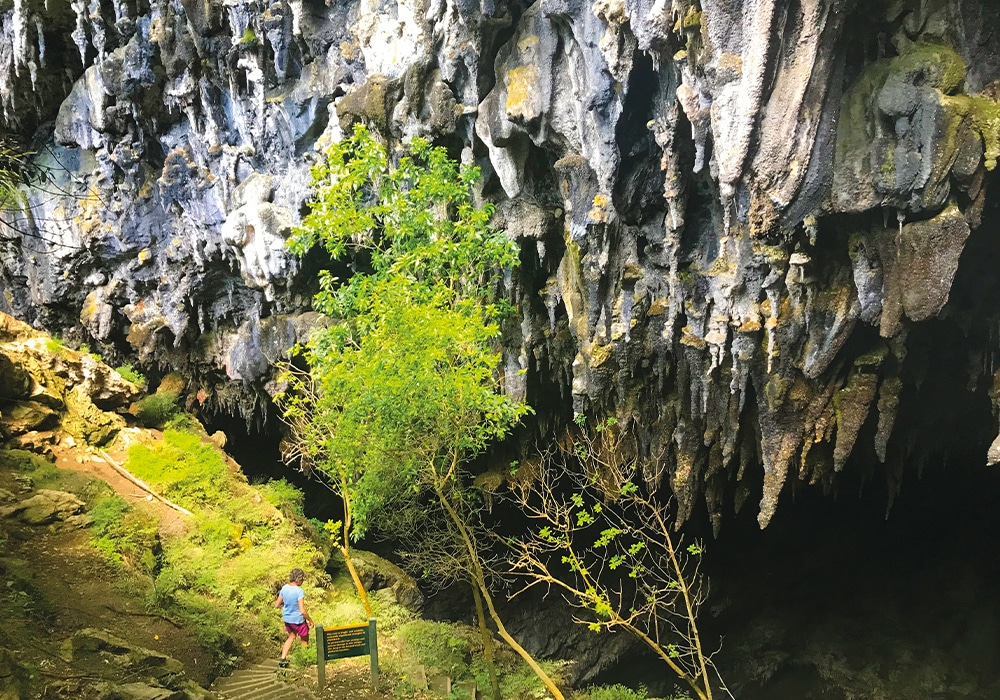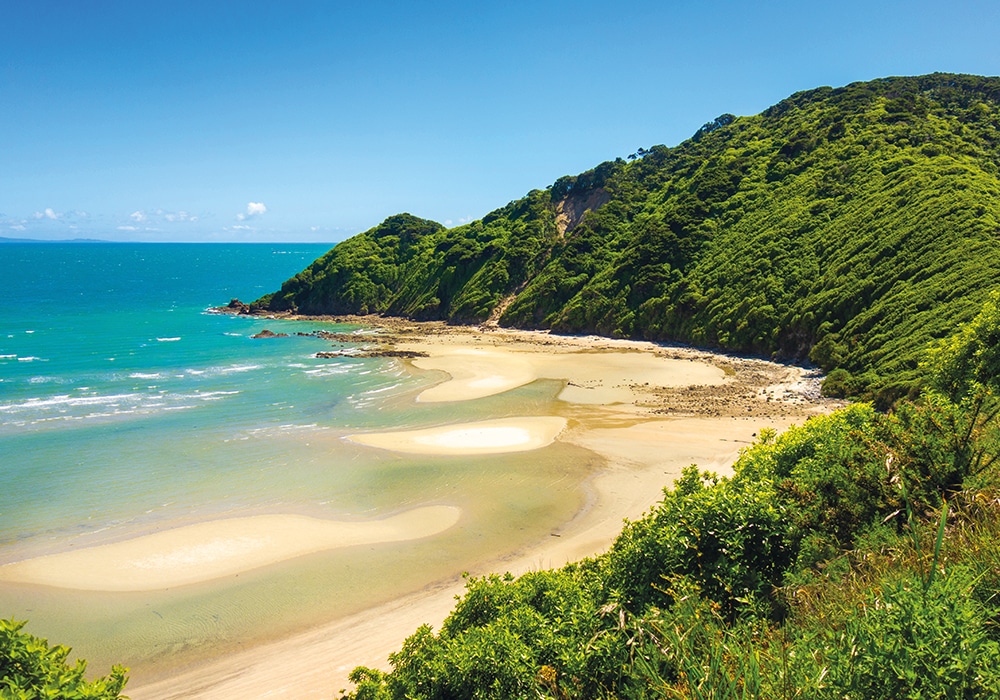Paul Owen parked up at Pohara in Golden Bay to learn about this ancient land’s history, and why this remote area is a mecca for RVers.
Some 12 million years ago a large chunk of ancient Fiordland began to shift northwards along the South Island’s alpine fault. Moving at a geologically astounding pace of 30 metres every 1000 years, it now forms North-west Nelson, and the mountains that frame Golden Bay contain rocks that are some of the oldest in New Zealand.
More recently, the bay instantly became something of a biblical Eden when two large national parks were established on its boundaries, shielding its natural wealth from the pillage of extractive industries. It continues to attract active travellers with its impressive springs of dancing sands, windswept landforms, diverse flora and fauna, and underdeveloped coastline.
The headline natural attractions of Golden Bay – the opal-like waters of Te Waikoropūpū Springs, the adventurous four wheel drive tour running the length of Farewell Spit, and the marvellous cave-pocked islands of Wharariki Beach – are well-documented. But what happens if you turn right instead of left at the fork when entering Tākaka?
Camping at Pohara Beach for several days, we explored the spiny peninsulas that define the beautiful bays located further east – Tarakohe Harbour, Ligar Bay, Tata Beach, Wainui Bay, Taupo Point, and Whariwharangi. Between Pohara and Tākaka lie the little hamlets of Clifton and Motupipi, each of which have their own unique and unusual attractions.
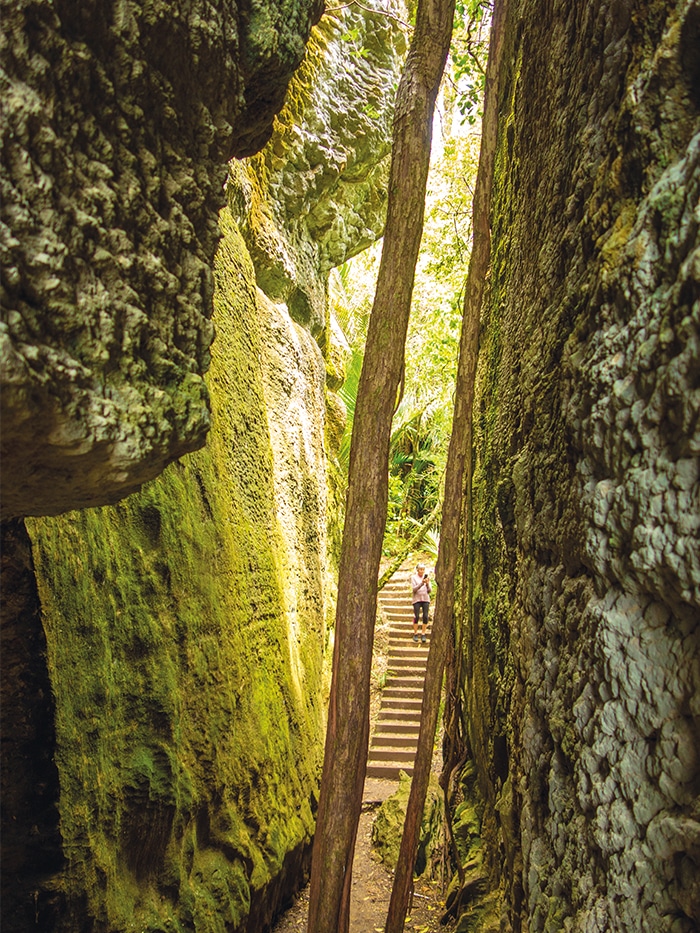
The best 30-minute walk in the world
It’s a big call, but I personally rate strolling around The Grove, near Clifton, as the best half hour anyone can enjoy while atop shank’s pony. The name refers to the mature native rainforest that has established itself on a spectacular village sized chunk of weathered limestone. Rain over the aeons has seared the fluted stone into narrow chasms and giant face-resembling shapes, while the many ferns, palms, and creepers that surround the dominant northern rātā trees give the walk a tropical atmosphere that’s rarely experienced in the South Island.
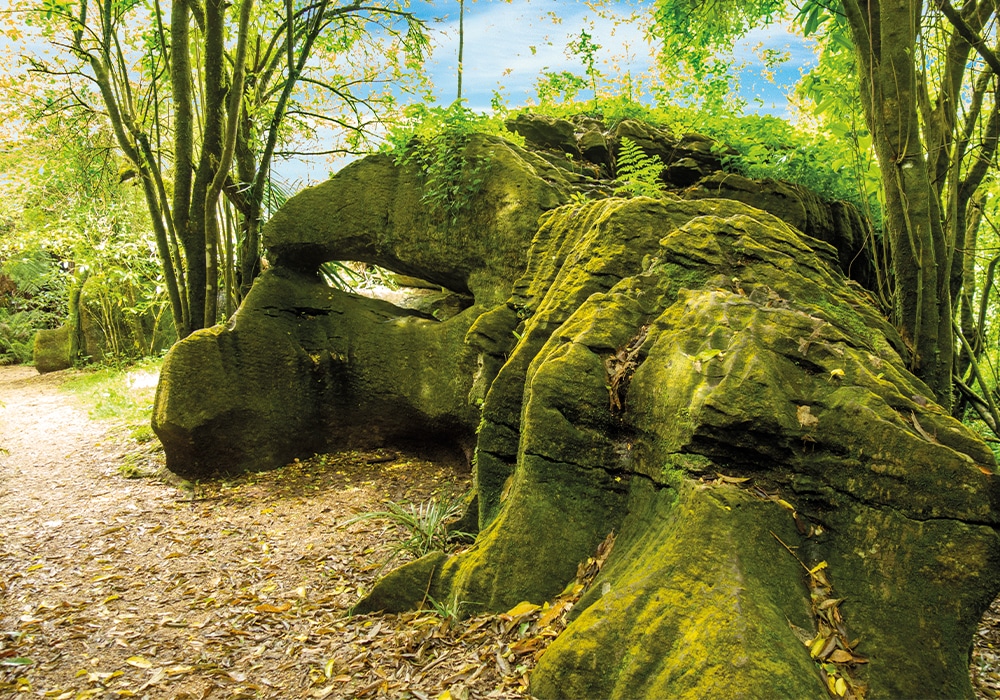
Kids will wonder whether a dinosaur lurks around the next corner of the path through this Jurassic jewel, while adults may become a little navigation-challenged while negotiating the maze-like landform full of steep moss-covered limestone walls. The karst formations are said to be 400 million years old, and the path that winds and zigzags through them has easy gradients suitable for all ages. Even the stairway that leads through the deepest chasm to a lookout from a limestone cliff located metres above the Tākaka valley requires only minor physical effort. The Grove is best viewed in summer when the rātā trees are in full flower.
Tasman’s tragic Memorial
There’s a memorial located near Tarakohe Harbour that was opened by Queen Juliana of the Netherlands in the 1970s to remember the tragic events of the morning of December 19, 1642, and the first confrontation between Māori and Europeans. Abel Janzoon Tasman had dropped anchor the night before off the eastern coast of Golden Bay with his two ships, Zeehaen and Heemskerk. The Ngāti Tūmatakōriri living in their pa nearby, thought that the sails propelling the ships were flocks of seagulls, and fearful of this god-like power, they issued a challenge to their visitors to either leave or fight via a nose-flute. When Tasman ordered a response by violin it was received as a musical declaration of war by the Māori, who prepared to fight the Dutch in the morning. When a boat sent from the Heemskerk to the Zeehaen for a council of officers in the morning was returning it was rammed by one of four chasing waka and four Dutch sailors were killed.
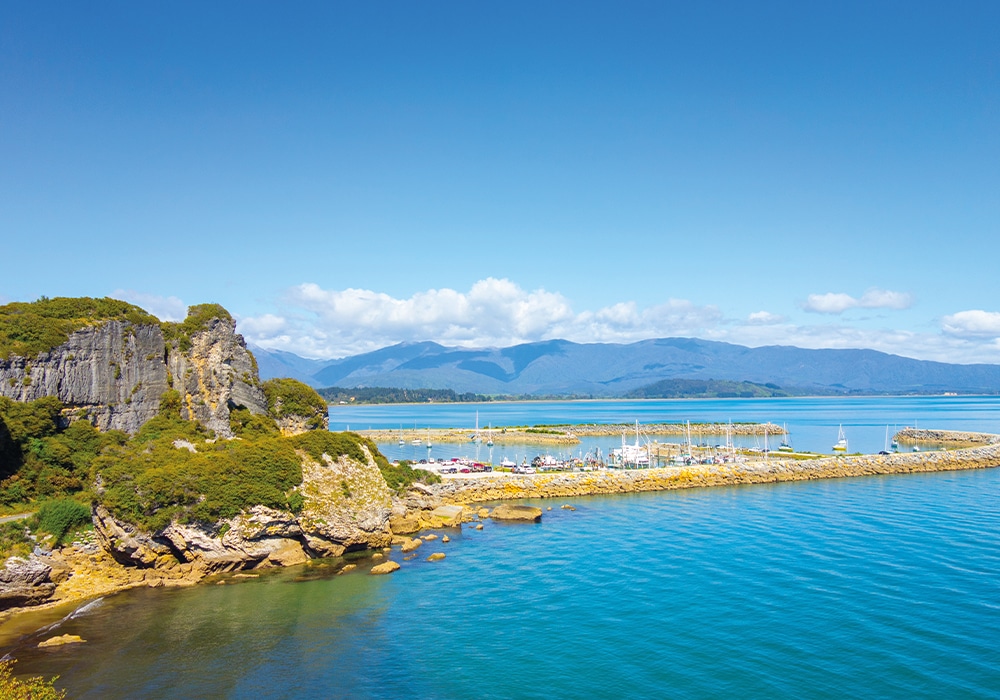
Tasman’s men fired cannon in return to keep the Ngāti Tūmatakōriri at bay, winning time for the Zeehaen and Heemskerk to hurriedly sail away. He, nor his men, never got to set foot on New Zealand soil, and the Dutch monarchy lost their opportunity to rule here. These events occurred nowhere within sight of the memorial above Tarakohe, as subsequent studies by historians have identified that the Ngāti Tūmatakōriri launched their canoes from a historic pa, located at Taupo Point, 15km further east. There, a launching ramp created by the iwi can still be seen. Radiocarbon dating has determined the log ramp to be more than 400 years old. It’s the oldest surviving man-made structure in New Zealand.
Like Tasman’s four sailors, the Ngāti Tūmatakōriri also came to a sticky end. Having inhabited the pa for more than two centuries, they were conquered by the Ngāti Apa in the 1700s, who in turn were displaced in 1820 by a federation of Ngāti Rārua, Ngāti Tama, and Te Atiawa who are the tangata whenua of Golden Bay today.
From junk to art
On the southern approach to Pohara is Sculpture705 Lollokiki, a sculpture studio that specialises in recycling interesting ‘junk’ into desirable art forms. A major resource for the sculptors, Toy Murchie and Kas Muller, are the copper jackets from the insides of old hot water cylinders, old pipes, wires, bearings and rusted engine parts etc. Kas says that visitors in RVs form a major customer base for the studio. “We’re often covering large sculptures in protective wrapping and squeezing them into motorhomes.”
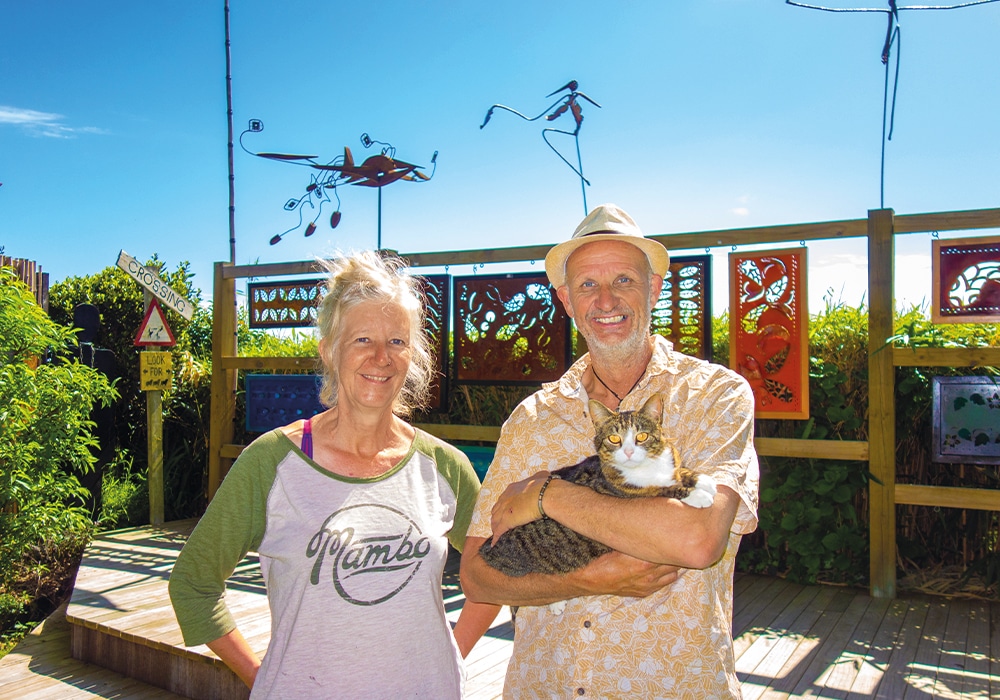
The facility combines a sculpture garden, studio shop, workshop, display archway, and two exhibition spaces – Slice of the Artifact and The Loft. Currently two themes are on show at Lollokiki, with lots of boat/waka sculptures on display among the many maple trees in the garden, while The Loft is chock full of Toy’s latest installation: the Sound of Progress. You enter The Loft across a floor that’s been liberally plastered with the pages of old encyclopaedias, showing the progression of technology, politics, and history. As you cross this timeline, several junk-made instruments appear to serenade you, playing a piece of original music composed especially for the installation by Dunedin musician and audio engineer, Harry Ford. It’s an emotive installation that’s more likely to be experienced in a big city art gallery than something you’d expect when visiting a little roadside studio in a remote corner of New Zealand. It really does reflect not only the creativity of the artist, but also the technical skills that she’s honed throughout her career.
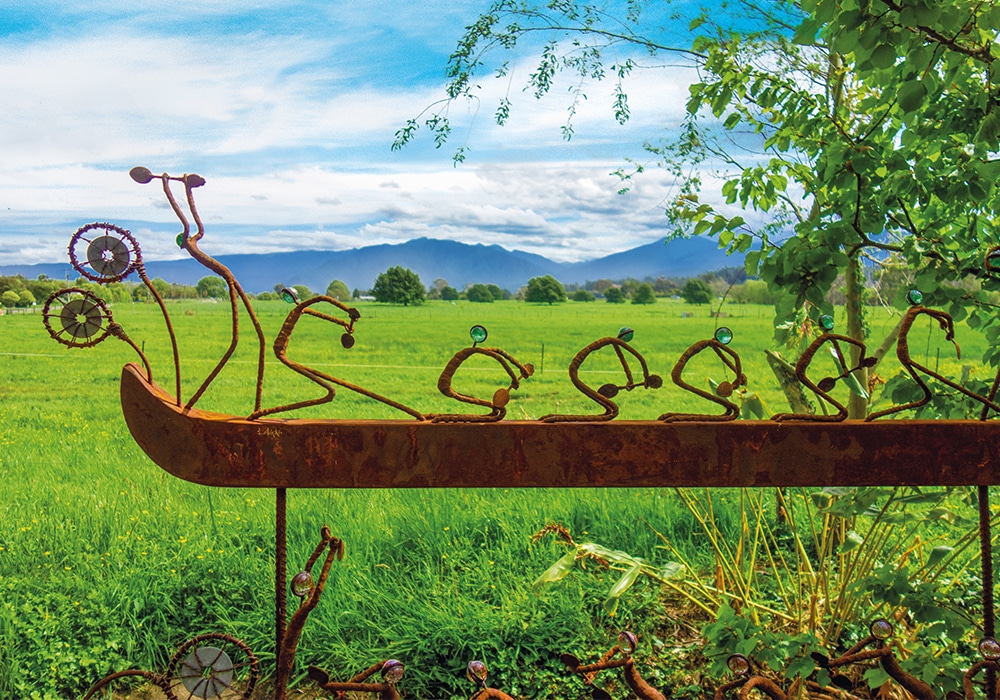
Motupipi’s Spiritual Innovator
Golden Bay doesn’t boast just one worldclass distillery, it has two. In Tākaka township you’ll find Dancing Sands distillery while further east in Motupipi you’ll find Kiwi Spirits, run by its irrepressible founder, Terry Knight. Both enjoy access to the clearest fresh water in the world sourced from the same aquifer that emerges at Te Waikoropupū Springs. Both have won highly contested international awards. Which is best? MCD Editor Catherine will vote for Tākaka as Dancing Sands Gin is one of her favourite tipples. Me? I’ll vouch for the Motupipi enterprise as Terry attacks everything he does with hurricane-strength energy and has a keen sense for innovation.
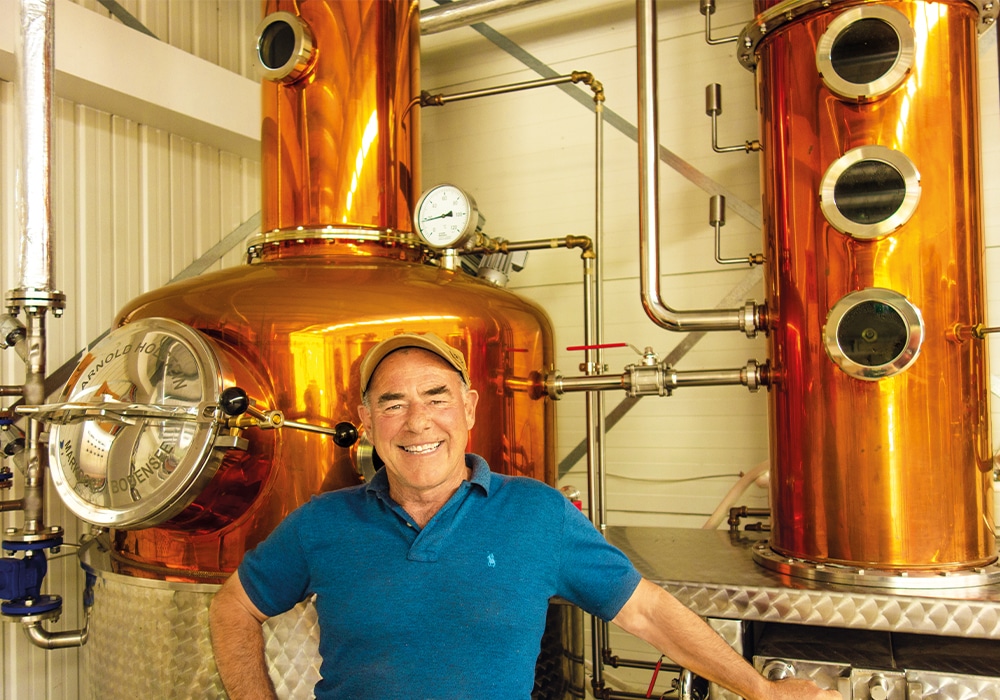
The way the Waitui eight-year-old single malt whiskey made by Kiwi Spirits circumvents the restricted access to ex-bourbon barrels for the ageing process is just one example. Terry sidesteps the issue by buying brand-new oak barrels from Bulgaria, flavours them by storing Manuka honey-wine in them for a year, then uses them to store the pure alcohol solution that will eventually age into Waitui whiskey. The result is a 40 per cent proof single-malt that’s slightly sweeter than usual and has a slight mānuka honey after finish that resembles the peaty flavour of some well known single malts from the Scottish islands. Kiwi Spirits’ Championz and Greenstone gins are no less innovative, the former giving after tastes of angelica and licorice, the latter adding the berries of kahikatea and totara trees to boost the Juniper. The Waitui single-malt and Greenstone Gin won silver awards at the recent 2022 London Spirit awards, as did two other Kiwi Spirits products. The company also makes Te Kiwi, a tequilana made from Weber blue agave plants grown on Terry’s 25-acre Motupipi property.
A walk on the wild side
In 1898, John William Hancock built a house at Whariwharangi Bay, just west of the point that separates Tasman Bay from Golden Bay. He then cleared the surrounding native forest in an attempt to establish a sheep farm that would ultimately prove futile. These days, the house that John built is the northernmost hut on the Abel Tasman coastal track and the nearby bay is one of the wildest most windswept beaches in the national park. It’s a three-hour walk there and back from the Golden Bay end of the track, and the track is smooth and has easy climbs – as we first discovered 35 years ago, when we carted our two preschoolers in a pram and a backpack to the hut, then produced a surprise cake so that our 10-year-old eldest son could celebrate his birthday at Whariwharangi. It’s a cherished memory of a place that has changed only a little since then and entirely for the better as the native bird chorus is more robust these days. Although the surrounding forest is still regenerating, the lower tree canopy permits some excellent views of Golden Bay as you walk the track on the Wainui Bay side. Looking at the steep sides of the once glaciated valleys of the bay, you can fully appreciate that this was once part of Fiordland.
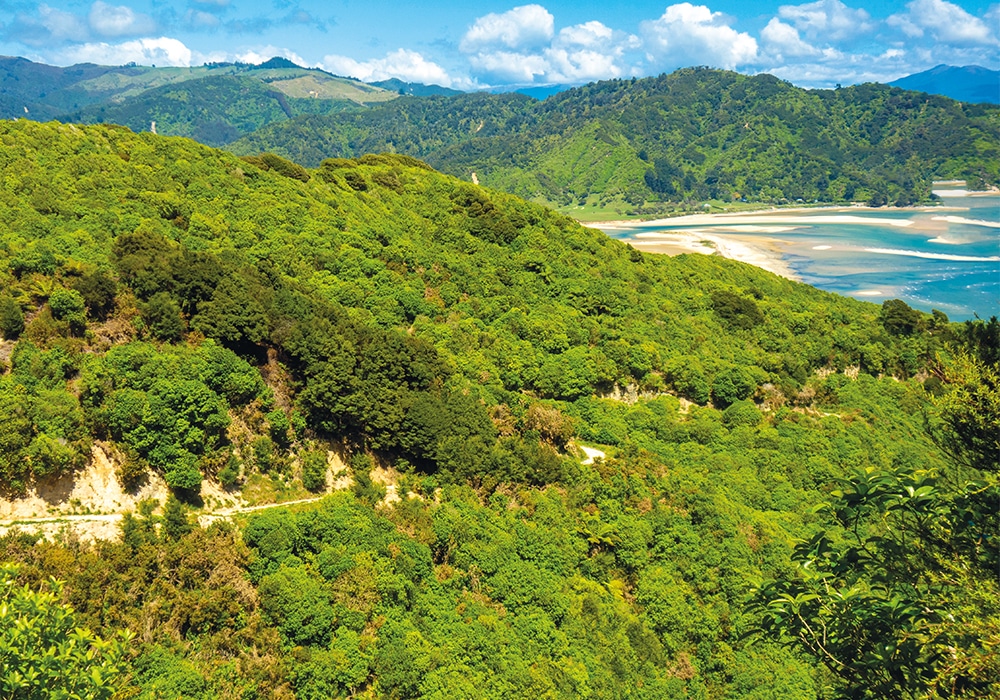
Places to stay
• Pohara Beach Top 10 Holiday Park – one of the best camps from this well-heeled franchise.
• Tarakohe Harbour NZMCA POP – toilets and showers available at nearby Pohara Boat Club.
• Wainui Bay DoC carpark – plenty of room for motorhomes at the start of the Abel Tasman coastal track.
• Kiwi Spirits, Motupipi – park-over facilities are under construction, and it’s bound to be a fun place to stay when they’re completed.
Five must-dos in Eastern Golden Bay
1. Hire a kayak at Tata Beach and paddle around the two bush-fringed islands nearby.
2. Visit EarthSea gallery in Boyle Street, Clifton, and admire the paintings of Peter Geen.
3. Eat at Molly B’s in Pohara: high quality fare at reasonable prices.
4. Clamber up the track to the spectacular Rawhiti Cave; it’s well worth the one-hour walk.
5. Cycle from Pohara to Tākaka over the recently completed cycle path.
